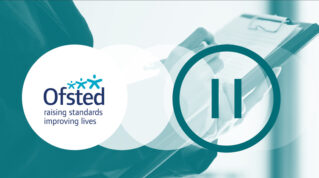In further education, the pursuit of excellence is a noble endeavour. Yet as we navigate the intricate landscape of Ofsted-graded institutions, a crucial question is whether ‘good’ or grade 2 is too wide for the range of practices is encompasses. At one end, ‘good’ reports read as great – or just shy of ‘outstanding’. At the other, they verge on something much less desirable.
The current four-point grading scale characterised by one-word judgments has been a fixture of our education system for many years. Calls for change (including those before the commons select committee from former Ofsted head Sir Michael Wilshaw last week) resonate. Incoming chief inspector, Sir Martyn Oliver has told the same MPs that he is unconvinced by the arguments, but his promised “big listen” should delve into the nuances of inspection reports to understand how closely or distantly an institution aligns with its assigned grade.
A deceptive clarity
At first glance, a simple grade seems like a straightforward assessment of an institution’s performance. However, the reality is more complex. This is why the Fellowship of Inspection Nominees (FIN) dissects inspection reports to uncover the details that really matter.
Examining published inspection reports from 1 September 2019 to 31 August 2023, we find compelling data. Over this period, there were over 1,300 inspection reports in total with 107 institutions (8 per cent) graded as ‘outstanding’. Breaking down the numbers by institution type reveals interesting insights, with sixth form colleges clearly leading the way in terms of the top grade.
When considering the type of provision delivered by the best performers, the data could suggest that the education inspection framework is more aligned to delivering full-time education to under-25s and less applicable to apprenticeship delivery. Learning on the job, at a variety of levels and at all ages is not such a snug fit.
In the same four-year period, inspections resulted in 64 per cent of all FE and skills providers being rated ‘good’, far outstripping those deemed ‘outstanding’, the 22 per cent judged as ‘requires improvement’ and the 6 per cent deemed ‘inadequate’ – individually and indeed collectively.
Are all ‘good’ providers really on a par with each other?
This begs the question: are all ‘good’ providers really on a par with each other? Does a ‘good’ grade imply a uniform standard of service across the board? In our view, the answer is not as straightforward as it seems.
Inspection reports have underscored this by throwing up some interesting examples and definitely revealing a spectrum. At one end, inspectors praised one grade 2 provider for its “welcoming and respectful environments” where learners “develop positive professional relationships with their trainers who support and motivate them to strive highly and achieve” – a clear indication that the right learners are enjoying the right programmes and succeeding. In contrast, another institution was also rated ‘good’ despite inspectors querying its levels of programme completion and whether the provider was using reasons for non-completion to improve its practices.
Does ‘good’ require improvement?
So is there room for a more precise differentiation between ‘really good’ and ‘only just good’ to accurately reflect the quality of leadership and operational delivery? Would this provide more clarity to potential learners and employers selecting provision, or to potential funders to give them confidence that a provider’s plans for growth are combined with integrity?
While grade 2 is commendable, especially for those who genuinely deserve it, it’s pleasing to see providers continuously strive for excellence. It’s also encouraging to see many who achieve ‘good’ looking for ways to further strengthen provision and aspire for a higher grade.
Equally, we should applaud those achieving ‘outstanding’ who work tirelessly to maintain exemplary standards and stay one step ahead. Lowering the bar to let more into that category would only devalue the category and their work. However, there is a good case for reviewing whether it is the rigidity of the EIF rather than the quality of provision that locks very good apprenticeship providers out of that band.
For all these reasons, Ofsted’s “big listen” should establish whether providers and employers agree that the scope of grade 2 is too wide.

















Your thoughts